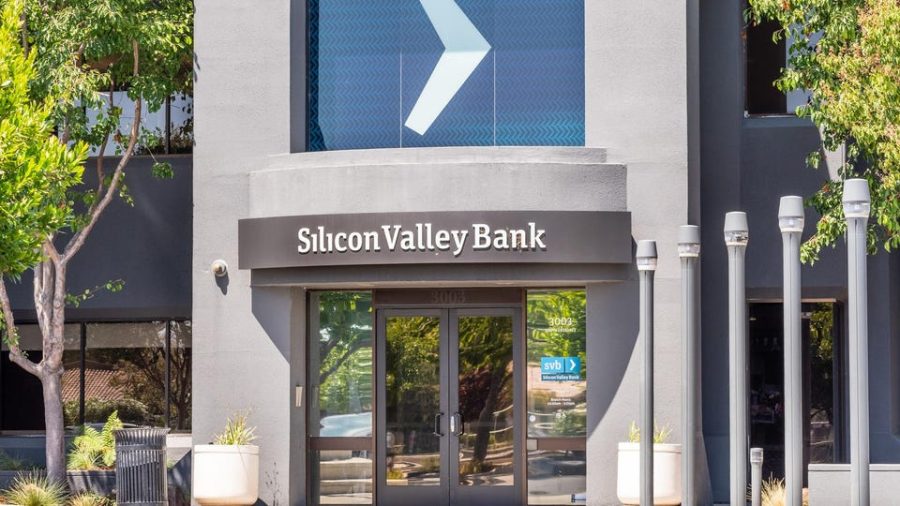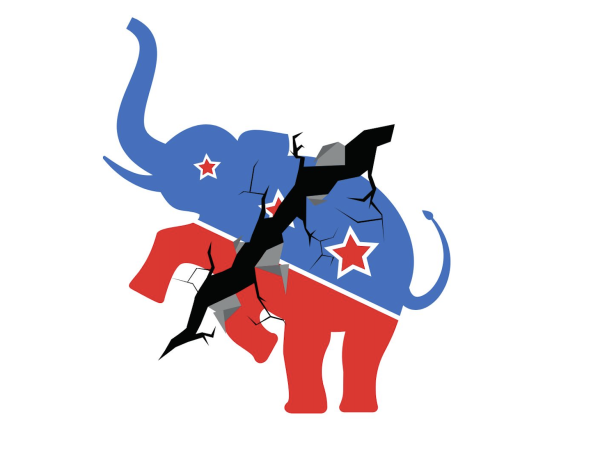Two major bank failures spark fears of greater contagion
April 3, 2023
Economic instability in America has been a hallmark these past few years highlighted by immense market volatility and soaring inflation. Until recently, the impact of economic instability has primarily been felt by individuals and businesses with the overall banking system in America remaining stable. Earlier this March, banks began to struggle and two major banks completely failed. First came the failure of California’s Silicon Valley Bank, followed by New York’s Signature Bank.
Founded in 1983 and based in Santa Clara, CA, Silicon Valley Bank holds over $200 billion in assets. Nearly half of all venture capitalist-backed companies in America, notably those in healthcare and technology, are financed by Silicon Valley Bank. The bank has a history of funding startups and was long considered a safe haven for these companies and their backing venture capitalists.
Silicon Valley Bank invested most of its deposits into long-term Treasury bonds, which are generally considered to be among the safest assets available. However, as inflation continued to rise, the Federal Reserve increased interest rates in order to help curb inflation and bring down the cost of basic goods. Interest rates and bond prices have an inverse relationship, meaning when interest rates go up, bond values go down. This is because new bonds released after a rise in interest rates have a higher payout, making them a better investment and thus lowering the value of bonds sold under the previous interest rate.
On March 10, the California Department of Financial Protection and Innovation closed Silicon Valley Bank and handed all assets over to the Federal Deposit Insurance Corporation (FDIC).
Not long after the failure and takeover of Silicon Valley Bank, New York’s own Signature Bank suffered a similar fate. Founded in 2001, Signature Bank offered banking services to both individuals and businesses, with a focus on real estate development and small business loans. At the time of its demise, Signature Bank held over $100 billion in assets, including $88 billion in deposits and roughly 12 percent of Greater New York’s commercial real estate lending market.
As soon as Silicon Valley Bank failed, fears of a greater banking crisis quickly spread. With fears of a repeat of 2008’s financial crisis, many individuals and businesses began to withdraw their deposits, placing strain on small and mid-size banks. Signature Bank was among these, and while some banks were able to cover withdrawals and remain stable, Signature Bank’s cash reserves dried up on March 12. This resulted in the bank’s failure and subsequent shutdown by federal regulators, further inducing fear of a banking contagion.
Since 1970, nearly 100 banks have failed in the United States, the largest being Washington Mutual in 2008. In general, bank failures occur when a bank’s total asset value falls below its total liability value, scrapping depositors’ ability to withdraw their money. Due to the increase in digital banking operations, which allow for faster and more frequent transactions, the risk of such mismatches in asset and liability values has increased.
As explained by University finance Professor Padma Kadiyala, “Silicon Valley Bank and Signature Bank both had atypical business models. A combination of a large proportion of uninsured deposits and a mismatch between the maturity of deposits and assets created a liquidity problem at the banks, which was resolved by placing the banks into FDIC receiverships. These developments have increased awareness of the new risks that come from banks operating in an increasingly digital economy.”
While the FDIC has been able to protect depositors and so far, prevent a major banking crisis, recent events have sparked echoes of the 2008 financial crisis. In particular, the consistent raising of interest rates has caused concern for many Americans.
“All of America has been shocked and troubled by the recent bank failures. The Silicon Valley Bank collapse was especially shocking, considering it financed nearly half of all venture capitalist-backed startups in the United States,” said University finance sophomore Braden Watson. “We are seeing physical bank runs occur, which was thought to be something of the past. It’s not unjustified that Americans are losing faith in the banking system. Although I don’t think that the recent collapses are the beginning of a larger banking disaster, it is an example of how interest rates affect the entire economy. If the Fed continues to raise rates, we could be looking at the first piece of a destructive domino effect.”
California and New York’s recent bank failures have been major contributions and prime examples of the continued economic instability in the United States. Whether or not this trend will continue over the next few years depends primarily on the Federal Reserve’s ability to curb inflation, along with the stabilization of capital markets.












